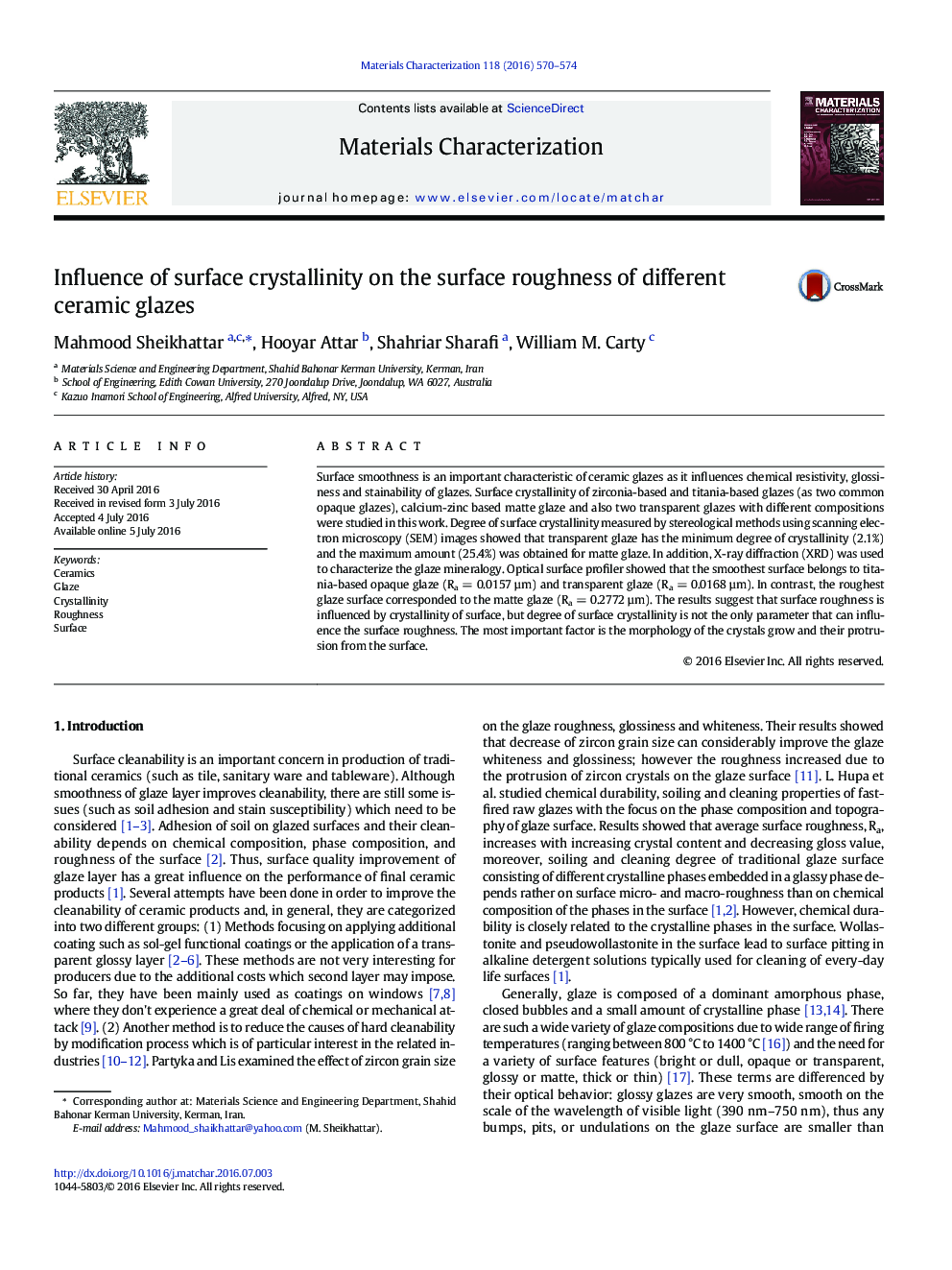| کد مقاله | کد نشریه | سال انتشار | مقاله انگلیسی | نسخه تمام متن |
|---|---|---|---|---|
| 1570583 | 1514369 | 2016 | 5 صفحه PDF | دانلود رایگان |
• Degree of crystallinity of glazed surfaces was measured using stereological methods.
• Crystallinity of the glazed surfaces is not the main reason of surface roughness.
• The morphology of crystal grow and its surface protrusion can affect the roughness.
Surface smoothness is an important characteristic of ceramic glazes as it influences chemical resistivity, glossiness and stainability of glazes. Surface crystallinity of zirconia-based and titania-based glazes (as two common opaque glazes), calcium-zinc based matte glaze and also two transparent glazes with different compositions were studied in this work. Degree of surface crystallinity measured by stereological methods using scanning electron microscopy (SEM) images showed that transparent glaze has the minimum degree of crystallinity (2.1%) and the maximum amount (25.4%) was obtained for matte glaze. In addition, X-ray diffraction (XRD) was used to characterize the glaze mineralogy. Optical surface profiler showed that the smoothest surface belongs to titania-based opaque glaze (Ra = 0.0157 µm) and transparent glaze (Ra = 0.0168 µm). In contrast, the roughest glaze surface corresponded to the matte glaze (Ra = 0.2772 µm). The results suggest that surface roughness is influenced by crystallinity of surface, but degree of surface crystallinity is not the only parameter that can influence the surface roughness. The most important factor is the morphology of the crystals grow and their protrusion from the surface.
Journal: Materials Characterization - Volume 118, August 2016, Pages 570–574
